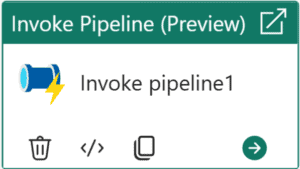For those of you who either attended Fabric Conference Europe and/or have some sort of social media account, it won’t come as a huge surprise that Microsoft is launching a new certification.
If you’re working with Microsoft Fabric and focusing on the data engineering part of things, this certification is for you!
What is it?
Where the DP-600 is more of a general Microsoft Fabric certification, the DP-700 focuses more on the data engineering side of things. Think data ingestion from the ETL side but also real time ingestion, processing and visualisation.
As usual, earning the certification means you need to take the exam (either from home or at a certified test center) and pass it with 700 points or more.
At the time of writing (October 2024) there’s no Microsoft Learn path available and the exam is in beta. The only known thing right now is a list of terms you can find by clicking here.
Still, we want to create a series of blogposts and videos on this exam to help you prepare for the exam.
Wait. We?
Cooperation
Yes, this time, I won’t be blogging solo but cooperate with the wonderful Valerie Junk. Together, we’ll create both blogposts and videos explaining the concepts and showing them in action.
This post will be the first example of this as Valerie has created a video whilst I’ve been at my keyboard hammering away to write a post. In other words, stick to what you like to do and gives you energy.
The study guide (click here) will provide us with the framework we’re going to follow. We’ll create a post for each sub-item you’ll see in the list. This means a lot of posts and videos to create. Don’t expect us to do this in a few weeks. Silly as it may sound, we need to do other things as well. Like work ;). As we both know that life happens when you least expect it to, there may be a short lull in posts. Just to set expectations.
The first video:
Content
This list will have links to our content when we’ve created it.
Configure Microsoft Fabric workspace settings
- Configure Spark workspace settings
- Configure domain workspace settings
- Configure OneLake workspace settings
- Configure data workflow workspace settings
Implement lifecycle management in Fabric
- Configure version control
- Implement database projects
- Create and configure deployment pipelines
Configure security and governance
- Implement workspace-level access controls
- Implement item-level access controls
- Implement row-level, column-level, object-level, and file-level access controls
- Implement dynamic data masking
- Apply sensitivity labels to items
- Endorse items
Orchestrate processes
- Choose between a pipeline and a notebook
- Design and implement schedules and event-based triggers
- Implement orchestration patterns with notebooks and pipelines, including parameters and dynamic expressions
Design and implement loading patterns
- Design and implement full and incremental data loads
- Prepare data for loading into a dimensional model
- Design and implement a loading pattern for streaming data
Ingest and transform batch data
- Choose an appropriate data store
- Choose between dataflows, notebooks, and T-SQL for data transformation
- Create and manage shortcuts to data
- Implement mirroring
- Ingest data by using pipelines
- Transform data by using PySpark, SQL, and KQL
- Denormalize data
- Group and aggregate data
- Handle duplicate, missing, and late-arriving data
Ingest and transform streaming data
- Choose an appropriate streaming engine
- Process data by using eventstreams
- Process data by using Spark structured streaming
- Process data by using KQL
- Create windowing functions
Monitor Fabric items
- Monitor data ingestion
- Monitor data transformation
- Monitor semantic model refresh
- Configure alerts
Identify and resolve errors
- Identify and resolve pipeline errors
- Identify and resolve dataflow errors
- Identify and resolve notebook errors
- Identify and resolve eventhouse errors
- Identify and resolve eventstream errors
- Identify and resolve T-SQL errors
Optimize performance
- Optimize a lakehouse table
- Optimize a pipeline
- Optimize a data warehouse
- Optimize eventstreams and eventhouses
- Optimize Spark performance
- Optimize query performance
Multiple resources
In any case, we’re really looking forward to digging into the exam and giving you some solid preparation. But don’t just rely on us, there are more smart people blogging and creating videos on learning Fabric skills like Nikola Ilic and Kevin Chant.
Also, we’re expecting Microsoft to release their learning path at some point. We won’t stop when that happens but keep adding our points of view to this series of posts and videos.
If you want to learn more, stay tuned for the next blogs and videos! In the mean time, if you have any questions or experiences to share, let us know in the comments :).
About the Authors:

Reitse Eskens
Microsoft Data Platform MVP | International speaker | Technical Consultant and Cloud Solutions Architect at Axians NL | MCT | Meetup Organizer | Microsoft Data Platform / Microsoft Fabric

Valerie Junk
Microsoft Data Platform MVP | Owner of PorcuBI | Power BI Data Visualization Expert | Data-driven Storytelling | Power BI Architect | Trainer | Speaker
Reference:
Eskens, R (2024). Junk, V (2024). Mastering the DP-700: Your Guide to Microsoft Fabric Certification. Available at: Mastering the DP-700: Your Guide to Microsoft Fabric Certification – Reitse’s blog [Accessed: 04th November 2024].










